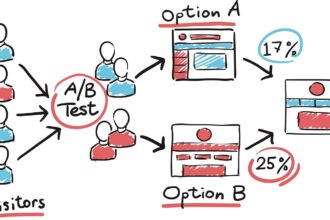How to Use UTM Parameters to Track Campaign Success: A Step-by-Step Guide for 2025
Introduction
Want to know exactly how your marketing campaigns are performing? UTM parameters are the key to tracking campaign success with precision. These simple tags, added to your URLs, help you monitor traffic sources, measure engagement, and optimize your strategies. In 2025, with digital marketing driving 60% of global ad spend, according to eMarketer, understanding UTM parameters is essential for businesses aiming to maximize ROI. This blog provides a clear, beginner-friendly guide on how to use UTM parameters to track campaign success, with practical tips to boost your marketing efforts and rank high on Google search.
What Are UTM Parameters?
UTM stands for Urchin Tracking Module, a system developed by Urchin Software, later acquired by Google. UTM parameters are tags added to the end of a URL to track where your website traffic comes from. For example, a URL like www.yourwebsite.com/?utm_source=facebook&utm_medium=social&utm_campaign=summer_sale tells you the visitor came from a Facebook post for your summer sale campaign. These tags work seamlessly with tools like Google Analytics, giving you detailed insights into your campaign performance. By using UTM parameters, businesses can track clicks, conversions, and user behavior across platforms like social media, email, and paid ads.
Why UTM Parameters Are Crucial for Campaign Tracking
In Nigeria, where 5.24 billion social media users engage daily, per Hootsuite’s 2025 report, knowing which platforms drive results is vital. UTM parameters help you:
- Identify Top-Performing Channels: See whether Instagram, WhatsApp, or email campaigns bring the most traffic.
- Measure ROI: Track which campaigns lead to sales or sign-ups, helping you allocate budgets wisely.
- Optimize Marketing Efforts: Use data to refine underperforming campaigns, saving time and money.
- Understand Customer Behavior: Learn how users interact with your website after clicking a link.
With 70% of marketers using analytics to guide decisions, UTM parameters are a must-have tool for staying competitive in 2025.
Key UTM Parameters to Use
There are five main UTM parameters you can add to your URLs:
- utm_source: Identifies the traffic source, like
facebook,google, ornewsletter. - utm_medium: Describes the marketing medium, such as
social,email, orcpc(cost-per-click). - utm_campaign: Names the specific campaign, like
winter_saleorproduct_launch. - utm_term: Tracks keywords for paid search campaigns, e.g.,
running_shoes. - utm_content: Differentiates similar ads or links, like
banner_adortext_link.
For example, a URL for a Lagos-based e-commerce store might look like:www.store.com/?utm_source=instagram&utm_medium=social&utm_campaign=black_friday&utm_content=story_link. This tells you the traffic came from an Instagram story for your Black Friday campaign.
Dont miss: 10 Essential Social Media Metrics You Should Be Tracking (And Why)
How to Create UTM Parameters
Creating UTM parameters is simple and doesn’t require technical skills. Follow these steps:
- Use a UTM Builder Tool: Tools like Google’s Campaign URL Builder or UTM.io make it easy to create tagged URLs. Enter your website URL and fill in the UTM fields (source, medium, campaign, etc.).
- Keep Tags Consistent: Use clear, standardized naming conventions, like
utm_source=facebookinstead offb, to avoid confusion in reporting. - Shorten URLs for Sharing: Long UTM links can look messy. Use tools like Bitly to create short, clean links that still track data.
- Test Your Links: Click the generated URL to ensure it directs to the correct page and tracks properly in your analytics tool.
For example, a Nigerian fitness brand could create a UTM link for a WhatsApp Community campaign:www.fitnessng.com/?utm_source=whatsapp&utm_medium=community&utm_campaign=new_year_challenge.
Setting Up UTM Tracking in Google Analytics
To see UTM data, connect your campaigns to Google Analytics 4 (GA4), the standard analytics platform in 2025. Here’s how:
- Link Your Website to GA4: Sign up for Google Analytics, add your website, and install the tracking code.
- Access Campaign Reports: In GA4, go to the “Reports” section, then “Acquisition” to view traffic by source, medium, or campaign.
- Create Custom Reports: Use GA4’s “Explore” feature to build reports focusing on specific UTM parameters, like conversions from a particular campaign.
- Monitor Real-Time Data: Check the “Realtime” report to see immediate results from your UTM-tagged links.
For instance, a Lagos restaurant using UTM parameters for an email campaign can see how many bookings came from a specific newsletter.
Best Practices for Using UTM Parameters
To get the most out of UTM parameters, follow these tips:
- Be Specific and Descriptive: Use clear names like
utm_campaign=back_to_school_promoinstead of vague terms likepromo. - Avoid Overcomplicating: Stick to the three core parameters (source, medium, campaign) unless you need term or content for specific tracking.
- Organize Your Data: Use a spreadsheet to track all UTM links, noting the campaign, date, and purpose to avoid duplicates.
- Segment Your Audience: Create different UTM links for each audience segment, like
utm_content=male_25_34for targeted ads. - Regularly Review Results: Check GA4 weekly to spot trends, such as which social platforms drive the most traffic in Nigeria’s competitive market.
Common Mistakes to Avoid
While UTM parameters are easy to use, mistakes can skew your data:
- Inconsistent Naming: Mixing
facebookandfbas sources creates messy reports. Stick to one format. - Overusing Parameters: Adding unnecessary tags can confuse your analytics. Keep it simple.
- Ignoring Case Sensitivity: GA4 treats
Facebookandfacebookdifferently, so use lowercase for consistency. - Not Tracking All Campaigns: Ensure every link (social, email, ads) has UTM tags to get a complete picture of performance.
By avoiding these pitfalls, you’ll ensure clean, reliable data to guide your marketing decisions.
Tools to Enhance UTM Tracking
Beyond Google’s Campaign URL Builder, try these tools:
- UTM.io: Offers templates and team collaboration for consistent tracking.
- Bitly: Shortens UTM links for cleaner sharing on platforms like Twitter.
- Google Analytics Goals: Set up goals in GA4 to track specific actions, like purchases or sign-ups, tied to UTM links.
These tools make it easier to manage campaigns, especially for small businesses with limited resources.
Why UTM Parameters Are the Future of Campaign Tracking
In 2025, with digital ad spend projected to hit $740 billion globally, precise tracking is non-negotiable. UTM parameters give businesses, especially in Nigeria’s fast-growing digital market, the ability to measure campaign success with accuracy. They’re free, easy to implement, and compatible with most analytics platforms, making them accessible for startups and large enterprises alike. As competition on platforms like Instagram and WhatsApp intensifies, UTM parameters help you stay ahead by revealing what works and what doesn’t.
Call to Action
Ready to track your campaign success like a pro? Start using UTM parameters today! Create your first UTM link with Google’s Campaign URL Builder, connect it to Google Analytics 4, and watch your data come to life. For more tips, explore resources like HubSpot or Moz to stay updated on digital marketing trends. Whether you’re a Nigerian entrepreneur or a global marketer, UTM parameters are your key to smarter, data-driven campaigns in 2025. Start tracking, optimizing, and growing your business now!
Conclusion
UTM parameters are a simple yet powerful way to track campaign success, offering insights into traffic sources, customer behavior, and ROI. By using tools like Google Analytics and following best practices, businesses can make informed decisions to boost performance. In Nigeria’s vibrant digital landscape, where mobile and social media dominate, UTM parameters help you stand out in a crowded market. Implement them today to unlock the full potential of your marketing campaigns and drive measurable results in 2025.
Image source: Pushalert.co





